Confira a programação do CBrAVIC 2017 na tabela abaixo:
| Segunda-feira 21/08/17 |
Terça-feira 22/08/17 |
Quarta-feira 23/08/17 |
Quinta-feira 24/08/17 |
Sexta-feira 25/08/17 |
|
|---|---|---|---|---|---|
| 08h30 | Abertura da secretaria | Palestra convidada Ronny Brandenburg |
Palestra José Alexandre Diniz |
Programação Especial para alunos do ensino fundamental e médio | |
| 09h15 | 09h00 - Abertura oficial | Apresentação oral ID 63 |
Apresentação oral ID 116 |
||
| 09h35 | 09h30 - Palestra convidada Odylio Denys Aguiar |
Apresentação oral ID 180 |
Apresentação oral ID 127 |
||
| 09h55 | Apresentação oral ID 156 |
Apresentação oral ID 37 |
|||
| 10h15 | Coffee break | Coffee break | Coffee break | ||
| 10h45 | Apresentação oral ID 136 |
Apresentação oral ID 114 |
Apresentação oral ID 179 |
||
| 11h05 | Apresentação oral ID 73 |
Apresentação oral ID 78 |
Apresentação oral ID 147 |
||
| 11h25 | Apresentação oral ID 167 |
Apresentação oral ID 31 |
Apresentação oral ID 25 |
||
| 11h45 | Palestra convidada Fiorenza Fanelli |
Palestra convidada Luc Pichon |
Palestra convidada Maria Cecilia Salvadori |
||
| 12h30 | Almoço | Almoço | Almoço | Almoço | |
| 14h00 | Palestra convidada Alexandre Tallaire |
Palestra convidada Michael Stueber |
Palestra convidada José Sérgio Almeida |
Programação Especial para alunos do ensino fundamental e médio | |
| 14h45 | Apresentação oral ID 177 |
Apresentação oral ID 111 |
Visita no LIT | ||
| 15h05 | Apresentação oral ID 170 |
Apresentação oral ID 120 |
|||
| 15h25 | Apresentação oral ID 140 |
Apresentação oral ID 107 |
|||
| 15h45 | Coffee break | Coffee break | Coffee break | ||
| 16h00 | Sessão de pôster 1  |
16h15 Assembleia e eleição SBV | Sessão de pôster 2  |
||
| 18h00 | Abertura da secretaria e Coquetel de Recepção |
||||
| 20h00 | Jantar de Confraternização |
| Data | Palestrante | Título |
|---|---|---|
| 22/08 10h45 |
Aline Capella de Oliveira | ID136: 300 maraging steel welded by plasma process |
| 22/08 11h05 |
Silvia Sizuka Oishi | ID73: Deposition of micro and ultrananocrystalline diamond on reticulated vitreous carbon for use in the nitrate electroreduction |
| 22/08 11h25 |
Mauricio Antonio Algatti | ID167: Optical absorption spectra of vanadium modified barium zirconium titanate and zirconium-doped calcium copper titanate powders |
| 22/08 14h45 |
Milena Kowalczuk Manosso Amorim | ID177: Optical and chemical characterization of a-C:H:Si:O:Cl thin films obtained by plasma enhanced chemical vapor deposition |
| 22/08 15h05 |
Nilson C. Cruz | ID170: Growth of hydroxyapatite coatings on tantalum by plasma electrolytic oxidation |
| 22/08 15h25 |
Vladimir Jesus Trava Airoldi | ID140: An overview of modified PECVD technique for DLC growth and its new areas of research and application |
| 23/08 9h15 |
Gelson Biscaia de Souza | ID63: H-Implantation changes stoichiometry and hydroxylation states of nitride titanium surfaces |
| 23/08 9h35 |
José Leonardo Ferreira | ID180: Study Development and Qualification Tests of Permanent Magnet Hall Thrusters for Future Brazilian Space Missions |
| 23/08 9h55 |
Adriana de Oliveira Delgado Silva | ID156: Deposition of HMDSO-based films on etched cellulose for creation of superhydrophobic surfaces |
| 23/08 10h45 |
Deivison Daros Paim | ID114: The effects of cycling the atmosphere nitriding ability on the structure of the nitride region of an AISI 1015 steel plasma nitrided |
| 23/08 11h05 |
Ing Hwie Tan | ID78: Construction of a photoelectron beam for calibration of space plasma electrostatic analyzers |
| 23/08 11h25 |
Konstantin Georgiev Kostov | ID31: Development of cold atmospheric pressure plasmas jets for surface modification and medical applications |
| 23/08 14h45 |
Anaftália Felismino Moraes | ID111: Partially tri-sulfated chitosan films using sodium sulfate salt and cytotoxicity evaluation on human neutrophils |
| 23/08 15h05 |
Elidiane Cipriano Rangel da Cruz | ID120: Tailoring surface properties of polyamide 6 by plasma processes |
| 23/08 15h25 |
Alessandro Rogério Victor | ID107: Optical characterization of an atmospheric pressure plasma DBD for cancer therapy |
| 24/08 9h15 |
Pedro Augusto de Paula Nascente | ID 116: Influence of the 316L stainless steel substrate roughness on the magnetron sputter deposition of Ti-Nb coatings |
| 24/08 9h35 |
Rafael Parra Ribeiro | ID127: Effect of plasma treatment on the corrosion resistance of carbon steel |
| 24/08 9h55 |
Adriano Gonçalvez dos Reis | ID37: Microstructural evaluation of maraging 300 steel laser treated |
| 24/08 10h45 |
Camili Ambrosio | ID179: High vacuum brazing and microstructural analysis of junction CuAG/Cu with SN100C alloy |
| 24/08 11h05 |
Evaldo José Corat | ID147: CVD diamond and carbon nanotubes nanocomposites production and applications |
| 24/08 11h25 |
Mario Ueda | ID25: Experiments on high current, low voltage, hollow cathode discharges for plasma immersion ion implantation (and deposition) inside Ti6Al4V 1.1 cm∅ tube |
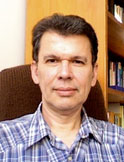
Ronny Brandenburg - Leibniz Institute for Plasma Science and Technology - INP - Greifswald, Germany
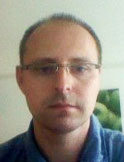
He is a scientist at the Leibniz Institute for Plasma Science and Technology (INP Greifswald) in Germany and head of the department “Plasma Sources”. He received a diploma degree in physics in 2000, and a Ph.D. degree in physics in 2005, both from the University of Greifswald, Germany. His research interests address plasmas at atmospheric pressure (generation, electrical breakdown, diagnostic) and plasma technology (plasma chemistry and environmental application, decontamination and plasma medicine). He holds 8 (eight) patents, 77 publications, 13 individual contributions to edited volumes/books (ResearcherID: G-6504-2011; h-index: 23), 22 invited oral presentations; 23 presentations at international and national conferences, workshops and colloquia, more than 50 conference proceeding contributions and posters. He has been a reviewer for several scientific journals (inter alia J. Phys. D: Appl. Phys., Plasma Sources Sci. Technol., Contrib. Plasma Phys., Plasma Chem. Plasma Process., IEEE Trans. Plasma Sci., Eur. Phys. J. D, Plasma Proc. Polym., New J. Phys.). He is a member of the Editorial Board of “Plasma Sources Science and Technology (PSST)” (IOP Publishing) since 2015, member of the International Scientific and Organizing Committee of the International Symposium on High Pressure Low Temperature Plasma Chemistry (HAKONE) since 2014 and serves as chairman and co-organizer of several European conferences.
Maria Cecília Barbosa da Silveira Salvadori - USP
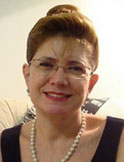
Possui Bacharelado em Física pelo Instituto de Física da USP (1980), Mestrado em Física Nuclear (1984), Doutorado em Ciências pelo Instituto de Física da USP (1988) e Pós-Dotorado em Lawrence Berkeley Laboratory (1990). Atualmente é Professora Associada, nivel 3, do Instituto de Física da USP. É coordenadora do Laboratório de Filmes Finos, cuja infra-estrutura é constituída por dois sistemas de deposição de filmes finos, quatro equipamentos para caracterização, infra-estrutura para realização de micro e nanofabricação e cultura celular. Um dos sistemas de deposição de filmes é um reator CVD (Chemical Vapor Deposition) para síntese de filmes de diamante e nanotubos; o outro sistema, denominado Metal Plasma Immersion Ion Implantation and Deposition, possibilita a deposição de metais, ligas metálicas, óxidos, nitretos, carbetos e diamondlike carbon. Os equipamentos para caracterização são: um Scanning Probe Microscope com acessórios para microscopia de força atômica (AFM), microscopia de tunelamento (STM), microscopia de força magnética (MFM), microscopia de força elétrica (MFE), célula para amostras imersas fluidos, célula eletroquímica, cabeçote para atmosfera controlada e software para nanolitografia; um Microscópio Eletrônico de Varredura com microanálise e acessório para nanolitografia; um microscópio ótico da Olympus de reflexão e transmissão, modelo BX51 TRF, com aumento até 5.000 vezes, câmera CCD e software para aquisição de imagem; e um sistema para medida de ângulo de contato, energia superficial de sólidos e tensão superficial de líquidos. A principal linha de pesquisa consiste no estudo de micro e nanoestruturas em filmes finos e modificação de superfícies.
Luc Pichon - Institut Pprime - Université de Poitiers, France
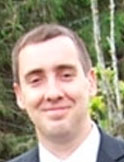
He is full professor at Université de Poitiers and headmaster of the Licence Professionnelle VERTE at the University Technological Institute (IUT) of Poitiers. He is also the leader of the Plasma Assisted Surface Treatments Team (Institut P’) and Partner/Coordinator of research programs: PHC Bosphore (2008-2010); Aquatisol (Regional supported Project); PLASMANET and CHESS (INTERREG IIB and IIIB SUDOE); APROSUTIS (academic and industrial aeronautics French project). His research interests include Plasma assisted treatments and Plasma Based Ion Implantation (PBII), Implantation and Thin Films Deposition and Materials sciences and characterizations. He is a regular reviewer for international scientific journals and Member of International Committees of PBII&D and SMMIB conferences. In 2013, he served as Conference Chairman of the International Conference PBII&D 2013. He was a Referee for 10 PhD defenses and a Research supervisor for 11 MSc research works, 8 PhD thesis and 2 Post-doc. He holds 53 publications in peer-reviewed international journals and 11 in conference proceeding, 91 communications (4 invited, 30 orals, 45 posters; 12 seminars - ResearcherID: A-4174-2012).
José Alexandre Diniz - UNICAMP
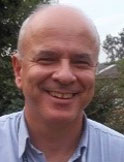
José Alexandre Diniz possui graduação em Física, mestrado em Engenharia Elétrica e doutorado em Engenharia Elétrica pela Universidade Estadual de Campinas (Unicamp), em 1988, 1992 e 1996, respectivamente. Fez o pós-doutorado, entre 1996 e 1998, no Departamento de Semicondutores, Instrumentos e Fotônica (DSIF) da Faculdade de Engenharia Elétrica e de Computação (FEEC) da Unicamp, com bolsa da FAPESP. Durante este período, fez um estágio, em janeiro de 1998, como pesquisador visitante, na University of Florida em Gainnesville, FL, USA. Foi da carreira de pesquisador PQ da Unicamp no Centro de Componentes Semicondutores e Nanotecnologias (CCSNano), entre 1999 e 2002. Desde 2002, tornou-se Docente da FEEC/Unicamp na área de eletrônica, sendo que desde 2007, é professor Livre Docente. As suas pesquisas continuam sendo executadas no CCSNano, onde foi Diretor Associado entre 2005 e 2010 e Diretor, entre 2010 e 2016. Atualmente, é Vice-Presidente da Sociedade Brasileira de Microeletrônica. Tem experiência na área de Microeletrônica, com ênfase em Micro e Nano fabricações baseadas em tecnologias MOS, MEMS, HBT e de grafeno.
Michael Stueber - Karlsruhe Institute of Technology - Institute for Applied Materials
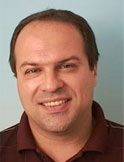
He is a senior scientist at the Institute for Applied Materials (IAM) at the Karlsruhe Institute of Technology (KIT) in Germany. He is group leader at the Department of Composites and Thin Films of the Institute of Applied Materials. He received a diploma degree in mechanical engineering in 1991, and a Ph.D. degree in mechanical engineering 1997, both from the University of Karlsruhe, Germany. His research interests address since many years the development of novel high-performance thin film materials for various engineering applications. He made contributions to the physical vapor deposition of diamond like carbon, transition metal nitride and carbide, carbon-based nanostructured composite and to the currently emerging field of novel oxide coatings, documented in more than 80 co-authored peer reviewed scientific publications. Cooperation with young, talented students and Ph.D. students in research was and is a major motivation for him. As an engineer working in a team of material scientists, he always worked to translate fundamental research results into new products and industrial applications. He holds several patents that are successfully applied by tooling companies, for example. Michael Stueber always took responsibility and served different communities in various functions. In support of AVS, he contributed to the activities of the Advanced Surface Engineering Division (ASED): he has been session and symposium chair at the International Conference on Metallurgical Coatings and Thin Film (ICMCTF) in San Diego since 2007; he served on the Executive Committee of ASED and Chair of the ASED Publications Committee, and he has been the lead editor of the proceedings of ICMCTF for many years. He is a member of the Program Committee of the AVS International Symposium and serves as Program Chair of the ASED program in the AVS International Symposium since 2014. In 2015, he was awarded AVS Fellow. He is a member of the Editorial Board of the archival Elsevier journal Surface and Coatings Technology, member of various Advisory Boards, and co-organizer of German and European conferences.
José Sérgio de Almeida – INPE
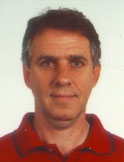
Graduação em Engenharia Mecânica pela Escola de Engenharia de São Carlos - USP (1981), pós-graduação no Instituto Tecnológico de Aeronáutica - ITA e doutorado em Engenharia Mecânica pela Universidade de Loughborough, Inglaterra (2000). Responsável pelo Laboratório de Simulação Espacial, do Instituto Nacional de Pesquisas Espaciais - INPE desde sua implantação.
Participou dos testes de voo dos satélites brasileiros, e também os de cooperação internacional tais como o programa CBERS com a China, o Brasilsat com o Canadá e como coordenador na campanha de qualificação para lançamento e voo do satélite Aquarius/SAC-D com os EUA-NASA e Argentina. Coordenador das campanhas de testes ambientais para qualificação dos experimentos científicos da Missão Centenário em 2006 (primeiro astronauta brasileiro) para a Estação Espacial Internacional - ISS.
Representante do Brasil no Working Group on Space Simulation - American Institute of Aeronautics and Astronautics - AIAA. Tem experiência na área de Engenharia Aeroespacial, atuando principalmente nos seguintes temas: simulação espacial, câmaras vácuo-térmicas, testes ambientais de satélites, testes vácuo-térmicos.
Professor da Agência Espacial Brasileira - AEB e da Universidade Internacional do Espaço - ISU.
Alexandre Tallaire - Laboratoire des Sciences des Procédés et des Matériaux (LSPM) – CNRS UPR3407, CNRS Université Paris 13
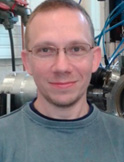
He is a CNRS researcher at the LSPM - Laboratory of Sciences and Process Engineering, University Paris 13, in France. He received an engineering degree in Materials and surface treatments in 2000, from Ecole Nationale Supérieure d’Ingénieurs de Limoges (ENSIL), and a Ph.D. degree in Process Engineering in 2005, from University Paris 13, both in France. His research interests crystal growth, chemical vapor deposition, plasma physics, process engineering, thin film deposition, material science, diamond based quantum technologies, electronic devices. He holds 63 publications in international peer-review journals, 2 patents awarded, more than 50 communications in international conferences, 7 invited international talks and 5 invited seminars, responsible for LSPM in several national and European projects, supervision of 3 PhD thesis. His professional activities include researcher at the Laboratory of Sciences and Process Engineering (France), PEMA team (diamond growth and applications: control of extended and point defects, device fabrication) since 2009; process engineer at Aixtron Ltd, Cambridge (UK) (deposition of III-V materials by metal-organic CVD for electronic applications - GaN, GaAs, InP…) from 2007 to 2009; and research associate at Nippon Telegraph and Telephone (NTT), Atsugi (Japan) (diamond-based field effect transistors) from 2006 to 2007.
Fiorenza Fanelli - Institute of Nanotechnology - National Research Council – Bari, Italy
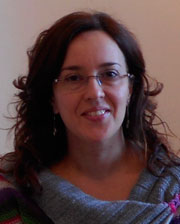
Fiorenza Fanelli is researcher at the Institute of Nanotechnology of the Italian National Research Council (CNR-NANOTEC, Bari, Italy). She received the M.Sc. Degree in Chemistry and the Ph.D. Degree in Chemical Sciences from the University of Bari in 2002 and 2006, respectively. Her research activity mainly focuses on the study of atmospheric pressure dielectric barrier discharges for applications in materials science and technology, with special attention to the deposition of functional and hybrid coatings, the chemical and morphological characterization of materials, the chemical diagnostics of the gas phase. Her recent interests have extended to environmental issues such as the plasma processing of materials for water remediation.
She authored over 35 papers on peer-reviewed international journals and 1 book chapter. In 2012 she served as guest-editor of Plasma Processes and Polymers (Wiley-VCH) for the Special Issue “Cold Atmospheric Plasmas for Thin Films and Nanomaterials”. Her expertise in surface processing of materials by atmospheric cold plasmas is increasingly being recognized at the international level, as evidenced by several invited lectures at prestigious conferences including the International Symposium on Plasma Chemistry, the Gordon Research Conference on Plasma Processing Science, the American Vacuum Society International Symposium and Exhibition.